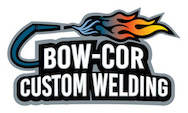- This topic has 0 replies, 1 voice, and was last updated Jun 24, 2011 at 2:17 PM by
Alain Parent.
-
AuthorPosts
-
Jun 24, 2011 at 2:17 PM #6869
Alain ParentKeymasterHello Team –
Great job on the running technique session yesterday. Continue working on your weaknesses, especially the stride rate and foot strike.
Here is a bit of running theory (from myself and running coach Russ Moss) and a running video.
Posture
When running, picture yourself as a puppet controlled with a string attached to your head. The string holds your posture vertical and perpendicular to the ground. Keep your chest out, eyes on a point about 30 feet in front of you, and head fixed. A slumped posture restricts your breathing. Keep your hips and back erect, creating an overall “tall” posture. Keep all your motion projected into the forward plane and avoid any lateral or vertical motion.Arm motion
Your arm motion acts as a counterbalance to your hips. If you have a stiff upper body while running, your shoulders will rotate causing an opposing movement of the hips; again, wasted energy. Try keeping your shoulders loose and your arms swinging like pendulums from your shoulders. Your arms should work in the same rhythm as your legs. Keep your hands relaxed and thumbs up.Maintain a fixed 90-degree angle at the elbow and make sure your arms don’t drop below your waist. There should be no movement at the elbow when running. Your arms should work freely forward to back and should not cross the midline of your body; remember all energy forward. Keep your hands loose, thumbs up, and don’t clench your fists.
Arm motion drills:
Side Brush: Gently brush the side of your ribcage with the palms of your hands as your run. If you have a fixed angle at the elbow you can’t “reach” with your hands.Stride rate
Stride rate is different in xc skiing and running as in running stride rate is very consistent across all runners; between 182 and 188 steps per minute. The exception is when all out sprinting for very short distances.Count your strides for 1 leg over 15 seconds. The number to shoot for is 23.
Improving stride rate is a good place to begin. If you have a low stride rate, you’re probably producing more vertical oscillation. This means you’re projecting energy and motion upwards instead of forward, which produces greater impact. Running should be akin to flying with your feet briefly touching the ground.
An elite runner’s feet touch the ground for as little as one tenth of a second per stride. The more time your feet spend on the ground, the more energy you’re wasting. You want to aspire to a stride rate of 182-188 strides per minute. Don’t worry about your stride length; your stride will naturally lengthen as your stride rate increases. Increasing stride rate will initially feel awkward, and may seem like you are taking “baby steps” while running, but this is a good sign. Plan on taking several months and a lot of practice before increasing your stride rate. Be patient.
Stride rate drill:
Turn overs: Turn overs train your neuromuscular system to move your legs faster than they’re used to. You will use a short stride and fast stride rate. This may feel a bit awkward initially. Visualize a sandpiper running on the beach and move your legs as quickly as you can while keeping a short stride.Foot strike
Your foot should strike forcefully directly under your center of gravity or hip. Visualize a line from your belly button to the ball of your foot. If your foot lands before or after this point, there are braking forces that will decelerate you.I recommend a mid-foot strike just aft of the ball of the foot. A mid-foot strike limits the amount of time your foot spends “rolling” along the ground when compared to a heal strike. The less contact time your foot has with the ground the better. Use a quick contraction of the muscles in your lower legs during push off, or a “pawing” motion.
Common Running Technique Problems:
Heel Striking: This acts as a braking action to your running as you will be striking in front of your centre of gravity. You then have to work on getting your weight back over this rather than using the “claw back” momentum of your foot to propel you forwards. It also increased the stress on joints as you will tend to land heavily as you do this.
Leaning Backwards: Ideally, your whole body leans slightly forwards (not bending at the waist), if you don’t you again brake your action and put strain on your lower back.
Lateral Arms: Your arms should swing through in the direction you are traveling, not across your body. If there is excessive lateral movement you will be twisting your whole body, through your shoulders and causing problems for your joints. The height at the front and back of the arm swing will depend on the speed you are running.
For sprinting, you should bring your arms up to about chin height at the front and so your upper arm is almost parallel with the ground at the back. The angle of your lower to upper arm should be around 90 degrees (just less at the front and just more at the back). For longer distances the range of movement is decreased, with the emphasis being on relaxation and balance, as opposed to drive.
Sitting as you run: If your hips are not held high enough you will tend not to extend your stride as you should. Also, it is harder to get significant knee lift and you’ll probably run fairly flat footed, relying primarily on the strength in your quadriceps and not using hamstrings and calves to their full ability.
Pendulum Legs: This is where you don’t lift your feet far off the floor as you don’t use your hamstrings much initially. This makes knee lift virtually impossible, resulting in a short stride length and in the later part of the action as your leg is relatively straight, you will actually put more stress on your hamstrings.
Check out the following video. A bit Monty Python ish, but good running technique: http://www.youtube.com/watch?v=WfJVBPqhwyA
-
AuthorPosts
You must be logged in to reply to this topic.

















